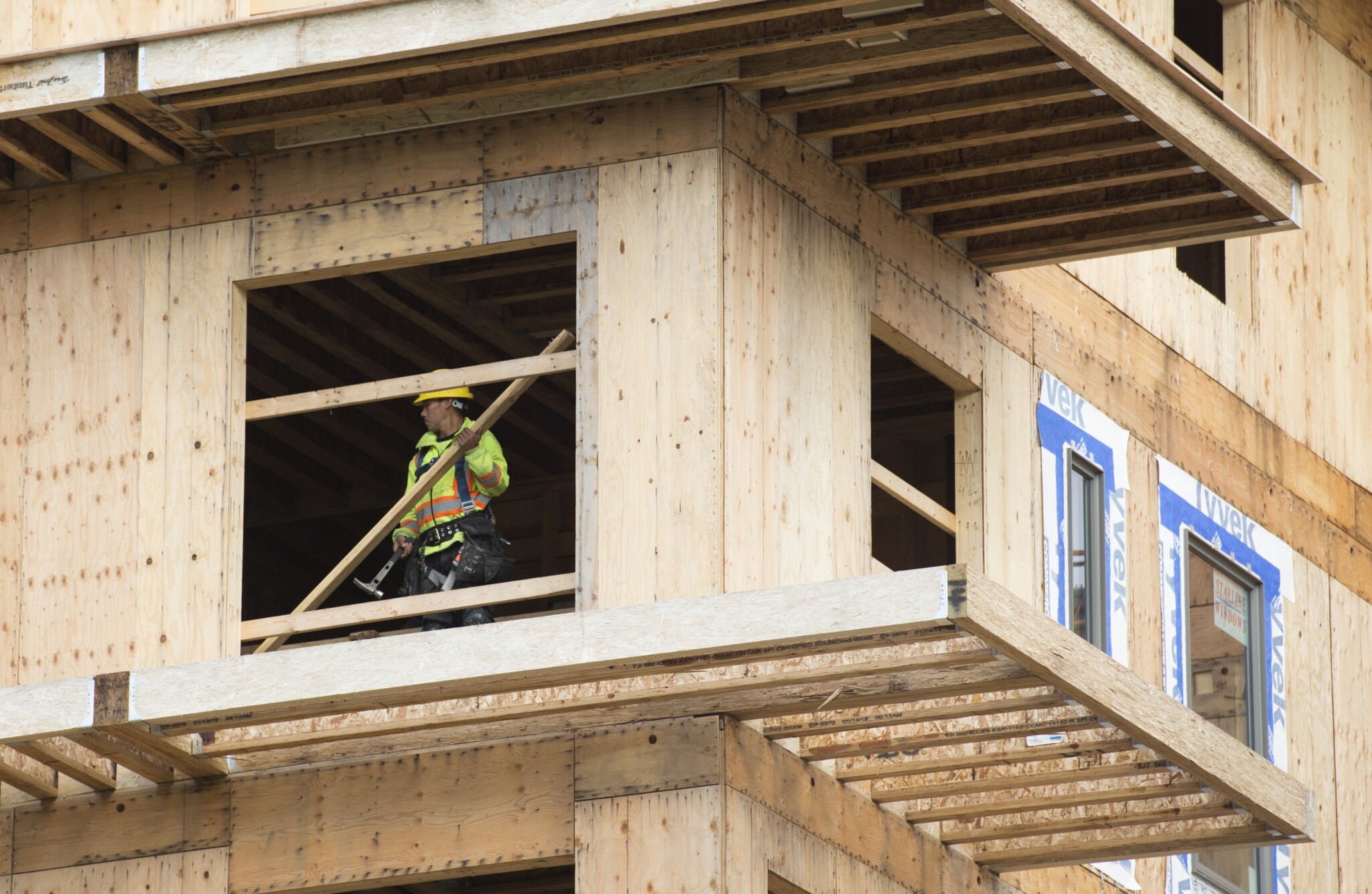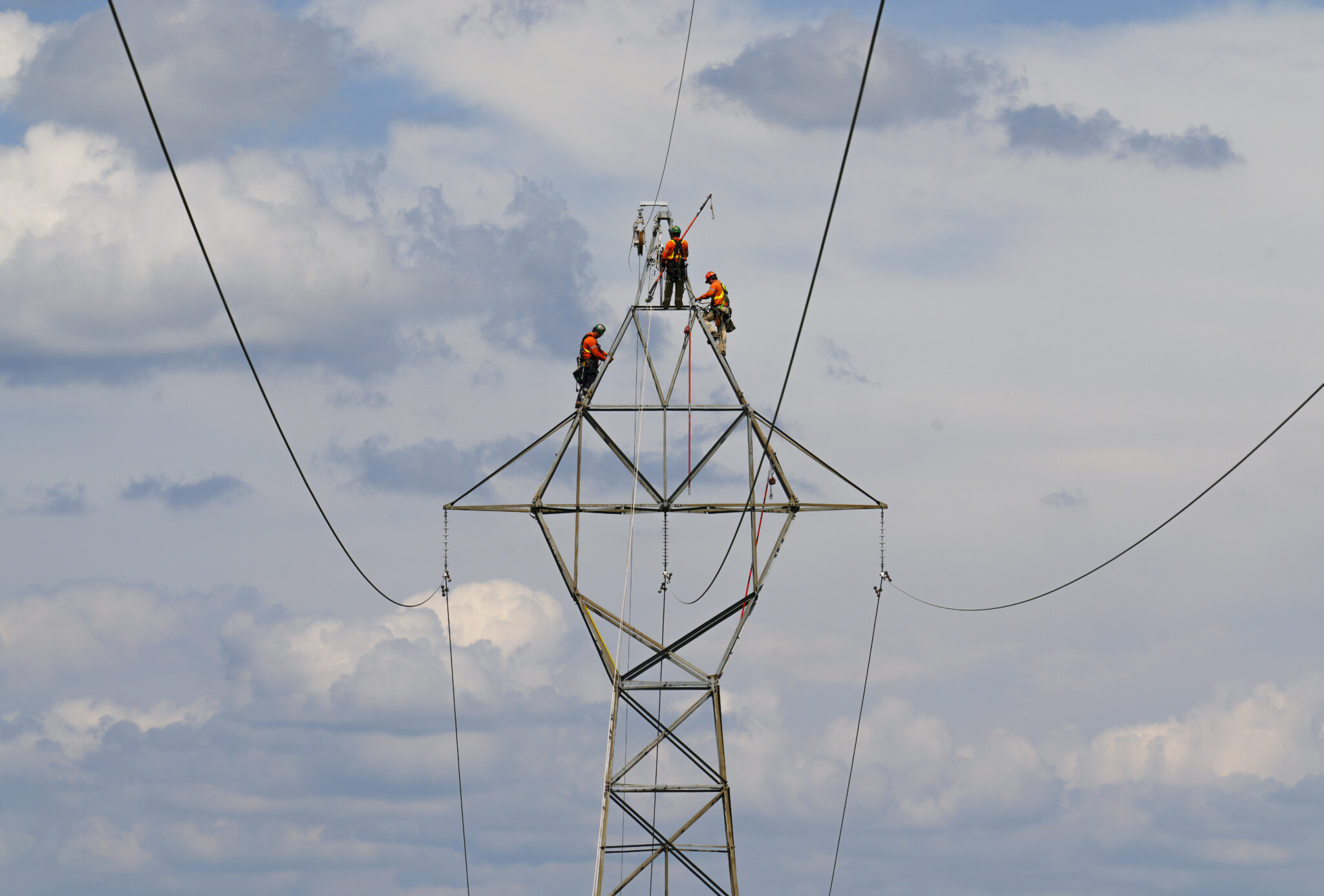As the president of an association of manufacturers, Dennis Darby has been hearing a lot about the growing desperation of Canadian employers to retain experienced, skilled workers in the trades.
“I talked to one business owner that was begging this guy to stay. ‘Whatever you want to work—three days a week, fine. You want to work between 10 and 3? OK, whatever you want,’ ” says Darby, who heads Canadian Manufacturers and Exporters (CME).
Desperate employers pleading for skilled tradespeople is the story of Canada’s growing labour shortage in a nutshell. Some 700,000 of Canada’s 4 million skilled tradespeople are set to retire by 2028, according to recent projections. At least one-third of tradespeople and apprentices in Ontario are 55 or older. And as older workers hang up their tools, they’re not being replaced with younger ones who bring matching skills to the job site.
According to Bill Ferreira, executive director of BuildForce Canada, an industry association for Canada’s construction sector, “We’ve been seeing this creep up as the big issue [since the mid-2010s]. All you have to do is look at the latest census data and population data and you’ll see that we have a challenge that is related to demographics.”
As Statistics Canada has warned, the discrepancy between the glut of unfilled jobs and the scarcity of qualified workers “poses a serious challenge for industries relying on the skilled trades.”

A crisis in manufacturing
Take manufacturing, for example, which generated $213 billion in economic activity and 1.6 million direct jobs in 2023.
Darby says as a result of labour shortages, “over 60 percent of manufacturers we surveyed said [they’ve] turned down or lost contracts.” “Which means they just can’t meet the production,” he adds Forty-three percent have postponed or cancelled capital investments. “That’s how important labour is in manufacturing.”
CME’s economists estimated the skills shortage in the manufacturing sector cost the Canadian economy some $13 billion in 2022 in lost contracts and delayed investment. And Darby says Canada isn’t doing enough to close the gap. “I think we’re going to have chronic labour shortages.”
A crisis in construction
In the construction sector, a $165-billion industry that accounts for 8 percent of Canada’s GDP, a CIBC report last year identified 80,000 vacancies across the country. Half the unfilled jobs require a skilled tradesperson to fill them.
“It is hardly a secret that the industry needs more workers, and fast. Ask any developer about supply issues and the availability of labour usually tops the list,” the report explains. It should be noted that in the short term, at least, a record-high 650,000 people are working in Canada’s construction industry and job vacancies have returned to pre-COVID norms, easing some concerns over labour shortages (for now).
Even still, the scarcity of skilled construction workers reportedly causing major headaches for employers and delaying the building of much-needed infrastructure, the shortage is driving up costs and contributing to the housing crisis, as the public service has warned the Trudeau government. The Canadian Mortgage and Housing Corporation estimates that Canada needs to increase its housing supply by some 3.5 million units by 2030 to bring affordability back to where it was in 2004. But with housing starts limping along at a rate of about a quarter of a million new homes a year due in part to growing labour and material costs, the housing shortage is growing as opposed to shrinking. As an RBC report summed it up: “The pace of housing construction would need to jump by nearly half…just to meet future demographic growth.”
In other words, the skills crunch is not a looming problem: it’s already here. It’s holding back Canada’s economic growth and driving inflation. And governments have only recently started creating programs to address the problem. Experts fear these efforts will prove to be too little, too late.

Making more skilled workers: education, apprenticeships, and immigration
There are two principal ways Canada can replenish its skilled trades workforce: through education, including on-the-job training, and through immigration.
The former stream involves people (who are often young, but not always) choosing career paths that lead towards a trade. They must then find an employer who will sponsor them through an apprenticeship—a provincially regulated on-the-job learning process that typically takes two to four years to complete. After that, the apprentice becomes a “journeyperson.”
It can be mandatory to complete an apprenticeship before working in a given trade—or not, depending on the discipline and the province. For example, it’s compulsory to be a registered apprentice or journeyperson to work as a heavy-duty equipment technician in Alberta or Quebec, but voluntary everywhere else. Everything’s a bit different in British Columbia, which got rid of official apprenticeships and trade certifications in 2003 and then started bringing them back as of 2022.
To be able to work across the country, tradespeople can seek a Red Seal qualification in one of 56 recognized trades; most involve tools, building, and fixing (carpenters, millwrights, plumbers) but a few focus on other specialties—hairdressers and cooks are both Red Seal trades.
Earlier this year, there appeared to be some good news when Statistics Canada reported a noticeable uptick in the number of Canadians registering for apprenticeships in 2022 (the most recent year available)—just over 81,000, representing a year-over-year increase of 12 percent and a record high since 2014.
However, the trendline appears to have moved down overall since 2008. And as Emily Arrowsmith, director of research and programs with the Canadian Apprenticeship Forum, cautioned in an email exchange with The Hub, many apprentices register but never actually complete their training. “The completion rate in Canada is 46 percent. In some trades, the majority of people end up leaving. If we could get more people to complete, we would be better equipped to address skills shortages.”
When it comes to recruiting from abroad, Canada has increased the flow of newcomers dramatically in recent years, but only a small proportion of them come equipped with a trade. In 2022, when the federal government announced an increase to 500,000 immigrants a year by 2025, representatives from the construction and manufacturing industries applauded the increase but cautioned that more needed to be done to ensure that some of the newcomers know how to swing a hammer. The perception was that a significant amount of new immigrants would help to build the homes that would house new arrivals, rather than just being more people that needed a roof over their heads. “The federal government is making housing more affordable and bringing in the skilled workers required to build more homes,” asserted Immigration Minister Marc Miller last year. “Without those skilled workers coming from outside Canada, we absolutely cannot build the homes and meet the demand that exists currently today.”
But, as it stands now, CIBC estimates a mere 2 or 3 percent of newcomers to Canada over the last decade have arrived with skilled trade qualifications. This has given credence to the widespread perception that the immigration system is biased toward recruiting white-collar workers over blue-collar ones. A research paper published last year quoted an immigration lawyer complaining that “we don’t necessarily need more HR managers and administrative workers but we do need carpenters and we are not doing a great job attracting bodies to fill positions…So we have this constant shortage of workers in these industries.”
Critics have lambasted the federal government for even falling short of its modest goal to bring in some 3,000 skilled tradespeople annually through a targeted stream called the Federal Skilled Trades Program. Just 450 people were admitted to Canada through the FSTP in 2022, down from 500 in 2021 and 565 in 2020. (Compare these figures to the number of reported job vacancies in construction-related trades in the third quarter of 2023: 4,865 for electricians, 4,010 for plumbers, pipefitters, and gas fitters, and 9,010 for carpenters—around half of the job vacancies had been open for at least 120 days for the latter two groups.)
The program might attract more successful applicants if it didn’t require them to have a job offer in Canada, or Canadian trade qualifications—not easy things to procure before moving here. Immigration officials aren’t in a hurry to speed up the program, with an average application processing time of 63 months in 2022—much longer than for related entry streams for applicants with more office-bound skills.
Unless industry and governments at all levels undertake aggressive reforms, observers say, Canada’s skilled trades workforce will continue to shrink, along with all the challenges it brings: lower economic output, inflation, and an accommodation shortage that fuels high housing costs.

What would solutions look like?
From industry associations to college instructors and individual firms, observers offer a familiar chorus of prescriptions to rebalance Canada’s workforce: more recruitment of skilled workers from non-traditional (that is, non-white male) backgrounds; changes to the education system to encourage more young people to train for a career in the skilled trades rather than choosing college or university—and changes to parental stigma around their kids’ career choices; and perhaps the most challenging but potentially the most decisive shift, a reform of Canada’s immigration system to torque the rules to encourage more skilled blue-collar workers to come here.
Recruiting people from “non-traditional” backgrounds
Various industry and government initiatives have been launched in recent years to encourage career-seekers who aren’t from the traditional demographics (read white men) to enter the skilled trades. This isn’t a diversity exercise for its own sake, say industry insiders. It’s a demographic necessity for industries like construction and manufacturing; they’re desperate for large influxes of new workers and must draw talent from the widest possible pool.
Many skilled trades, especially the most lucrative ones, have traditionally been male-dominated, a fact that, based on the current crop of apprentices, won’t change soon. A 2021 RBC report noted that just 11 percent of new apprentices were women. Meanwhile, immigrants accounted for 8.7 percent of apprentices, despite being more than 20 percent of the population.
Yet the data suggests right now some workplaces are still turning women away. “If we hired, trained, and retained more women in the trades we would be better positioned to address skills shortages, ” according to Arrowsmith of the Canadian Apprenticeship Forum. “Women only make up around 6 percent of total apprentice registrations in construction, manufacturing, and transportation trades, and their completion rates are much lower than men’s. This is partially because of the trades they are in, but it is also because of unwelcoming worksites. More respectful workplaces could help retention in the trades.”
Getting more people to choose a trade in their thirties, forties, or beyond is another possible way to increase the flow of new entrants. While it’s true that most people enter training for the skilled trades in early adulthood, data from Statistics Canada shows at least 47 percent of apprentices across the country were over 30 in 2018 (14.3 percent were over 45), a proportion that had slowly been growing over the previous five years. Programs exist to encourage people to apprentice later in adulthood, but they are small and scattered.
Recruiting more young people
From British Columbia to New Brunswick, several provinces are (belatedly) creating programs and policies to encourage more high schoolers to choose a path that leads to a skilled trade—for example, by allowing them to collect credits toward graduation while working as apprentices. That’s what Ontario’s new Focused Apprenticeship Skills Training program does. FAST will supplement existing high school “pre-apprenticeship” pathways like the Ontario Youth Apprenticeship Program, which participants can enter from age 15. Supporters say the move brings Ontario a step closer to German-style secondary education, where high school, apprenticeship, and eventual employment are tightly integrated. Others worry the plan could limit participants’ opportunities over the long run.
Arrowsmith says employers are often reluctant to take on the responsibilities of training young people, and could actually prove to be the weak link in high school-to-apprenticeship pipelines.
“Employer investments in apprenticeship tend to be low,” she says, noting that apprenticeship is up to a four-year commitment, “and you have to teach a number of different tasks to the apprentices. If no one is willing to train a first-year apprentice and you don’t have a commitment to training, you will continue to have chronic shortages.”
Already, there are reports of difficulties placing students taking part in these programs. The Globe and Mail quoted a teacher who had to make 30 calls just to place one apprentice student at a construction site.
Overhauling how Canada selects immigrants
Thanks to their sheer numbers, newcomers could be the decisive source for replenishing Canada’s dwindling trades workforce. Industry associations have called for changes that could tilt the immigration selection process in that direction.
According to BuildForce’s projections, rising construction demand and the retirement of 21 percent of the current workforce will add up to a need for 352,000 new construction workers by 2033. The problem? Even with the recent efforts to entice more young people into the trades through high school programs and other initiatives, Canada isn’t expected to muster enough homegrown skilled workers to fill the need. “Although the industry is expected to recruit approximately 266,300 new entrants under the age of 30 during this period to help offset some of this requirement, even at these heightened levels of recruitment, the industry is likely to be short 85,500 workers by 2033.” (Emphasis mine.)
This spring, BuildForce called on the Trudeau government to make up the shortfall through immigration reform. “Closing this gap will require the industry to hire from a variety of sources, including from among the hundreds of thousands of new permanent and non-permanent residents that are projected to be admitted to Canada in the coming years. The difficulty is, the system does not currently support this objective.”
Manufacturers feel the same way. The Canadian Manufacturers and Exporters’ position, Darby says, has consistently been: “We need more immigrants.”

Overcoming the stigma around the trades
Rick Hackett, a professor of human resources and management at McMaster University, says one of the most stubborn problems holding back recruitment is still the lingering misperception that jobs in the trades are dirty, dumb, poorly paid, and potentially dangerous. “I think the stigma is still largely there. Much more needs to be done from a marketing and public relations perspective to get over that,” Hackett says, noting that many parents of today’s teenagers attended high school around the 1990s when technical subjects (“shop class”) were pulled from many schools. (Ontario is reintroducing a technical class requirement for Grade 9.
That outlook is out of step with 21st-century reality. Jobs in the trades are often cleaner and more technology-oriented nowadays than most people realize. The careers are relatively secure—especially since most observers expect the labour shortage to continue for at least the next few years. “It means that there’s going to be a lot of competition for their talents. They’re going to have a lot of choice when it comes to career selection,” says Ferreira of BuildForce.
And with some exceptions, skilled workers tend to make good money. These paycheques no doubt become even more appealing during a cost of living crisis. Plumbers earn a median of $33 an hour. Welders make an average of $38 an hour in Alberta. Industrial electricians make, on average, $38.50, with highs into the $50 to $62 range, depending on the region. And because apprenticeships are paid positions, young tradespeople tend to start their careers free of student debt.
Recruiting more young people into the skilled trades may be a heavy lift, requiring a rejigged education system and a change in attitudes among educators and the general population. But if Canada fails to get this right, the consequences could be a country that continues to fall behind economically as its nagging productivity problem gets worse, while immigration continues to grow the population.
Imagine companies growing more slowly because they can’t find workers to install and run the machinery that could boost productivity. They could be forced to hire candidates who lack the skills required. Small businesses would continue to miss out on sales opportunities due to labour shortages and turned-down contracts (the Canadian Federation of Independent Businesses estimated the value of missed work opportunities at $38 billion for Canadian small businesses over the year ending April 2023). As for the impacts on day-to-day life, some have suggested the consequences of a worsening skills shortage could also include the price of transportation going up because bus companies and airlines are short of mechanics, and could even extend to restaurants charging more because they can’t find enough cooks.
On the upside for the next generation, solving the challenge will give many young Canadians attractive pay rates and career prospects, leading to something they desperately want: a future.
Leverage, too: as Darby would advise young people deciding on a career, choosing a trade could one day lead to employers “begging you to stay.”





